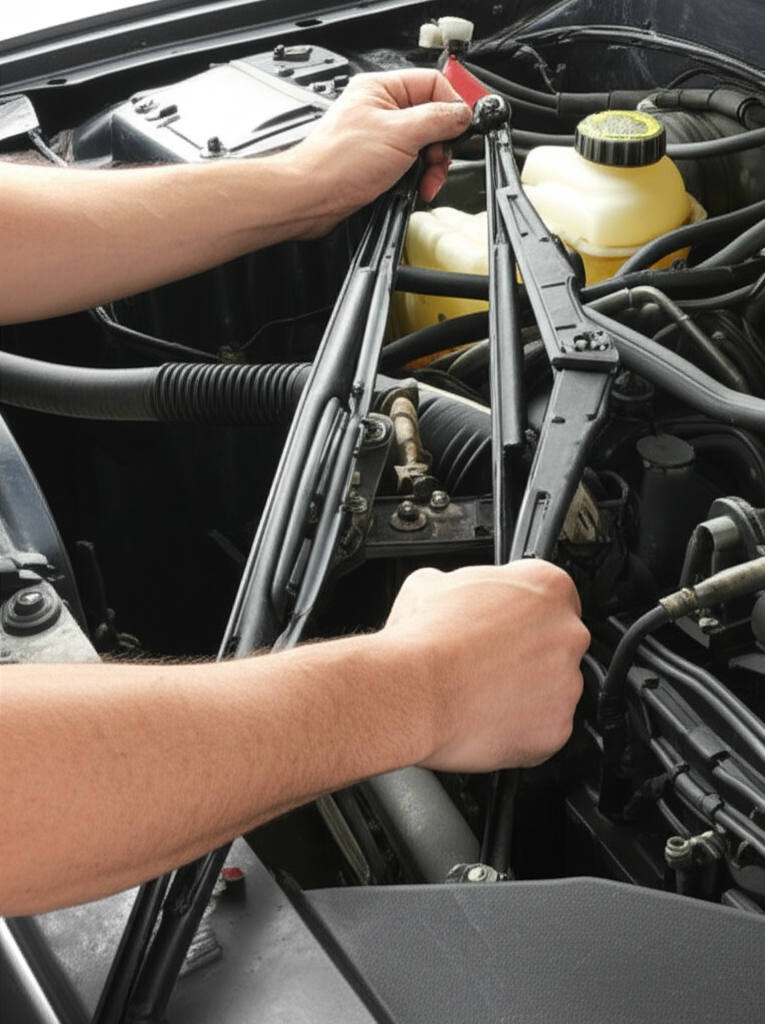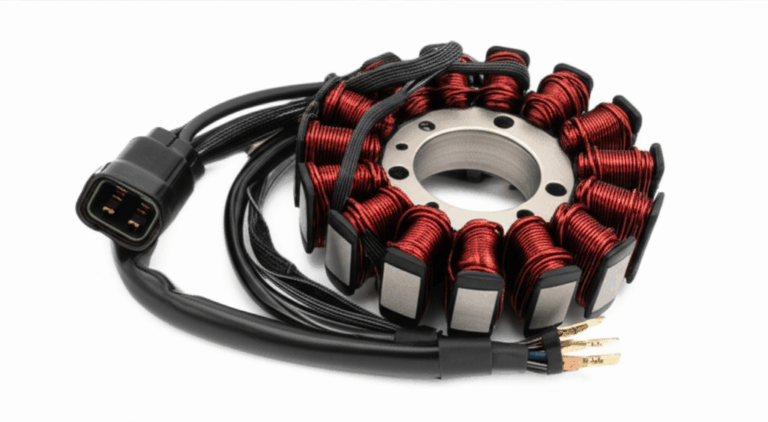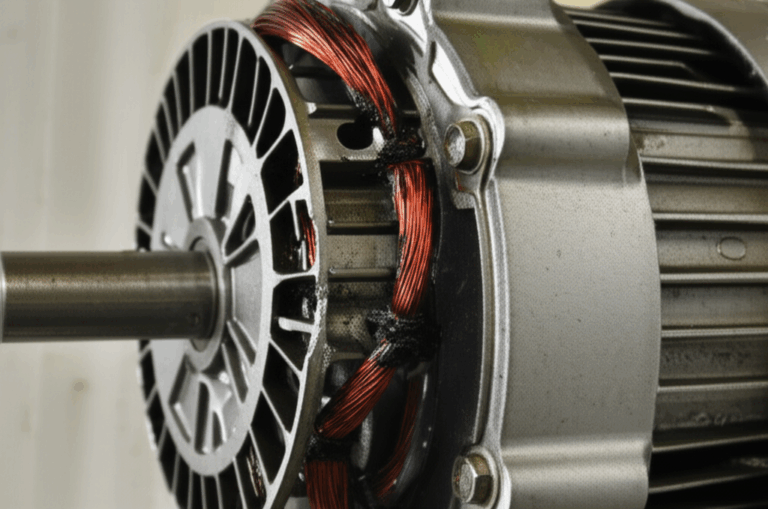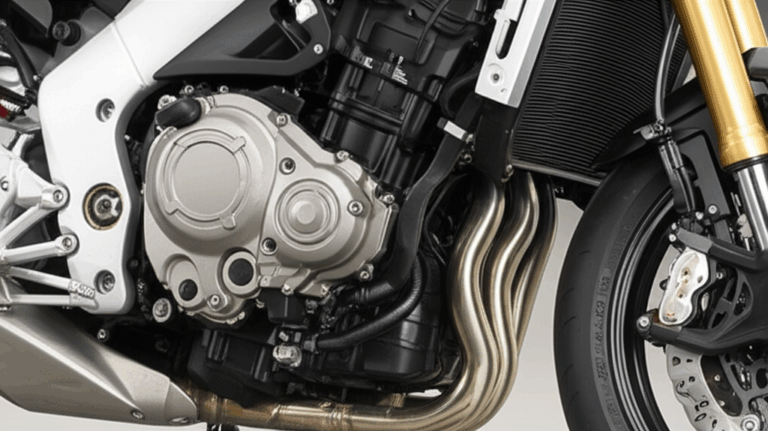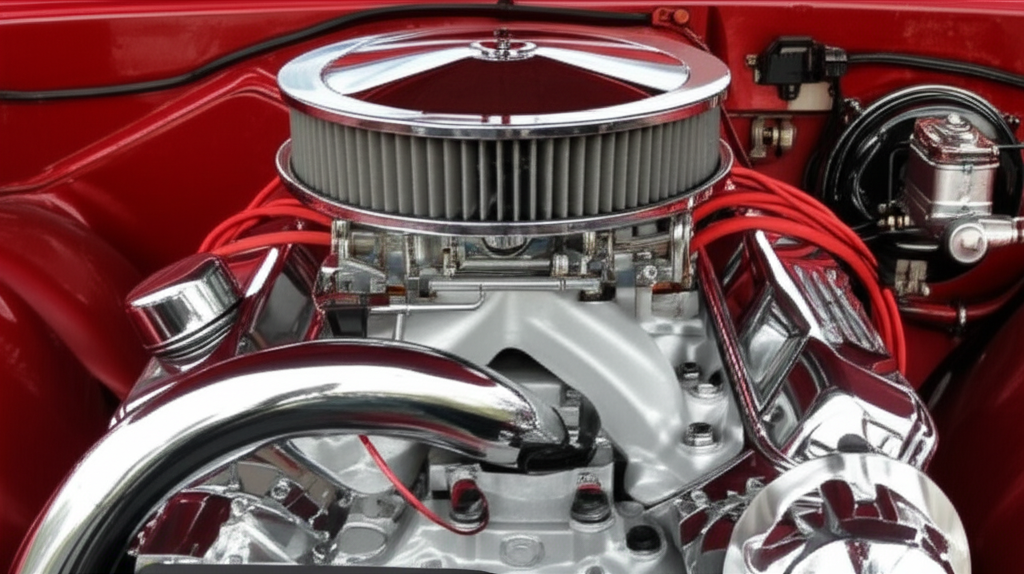
What Is a 383 Stroker Motor? The Ultimate Guide to SBC Performance
A 383 stroker motor takes a classic Chevy 350 Small Block and gives it more push. It does this with a longer stroke crankshaft to raise the displacement from 350 cubic inches to 383 cubic inches. Read this if you want more torque, more fun on the street, and a clear plan to build, buy, or tune a 383 Small Block Chevy.
Table of Contents
- Introduction: Why a 383 Stroker Hooks You
- What is a 383 Stroker Motor?
- How Does a 383 Make More Power?
- What Parts Do You Need for a 383 Stroker Build?
- How Do You Build a 383 Stroker at Home?
- What Does a 383 Stroker Cost?
- 383 vs 350 SBC: Which Should You Choose?
- What Are the Advantages and Disadvantages?
- Street, Strip, Tow, or Boat: Where Does a 383 Fit Best?
- How Do You Tune and Support a 383 for Reliability?
- What About Forced Induction, E85, and Engine Management?
- Real-World Numbers: Horsepower, Torque, and Dyno Results
- Is a 383 Stroker Right for You?
- Company Corner: Strong Power Meets Smart Electrics
- References
- Summary of Key Takeaways
- Optional FAQ
Introduction: Why a 383 Stroker Hooks You
Problem: Your car feels lazy off the line. You push the pedal and wait. It gets there, yet it does not jump. You want a small block that pulls hard, sounds mean, and still fits like stock.
Agitate: A weak bottom end makes street driving dull. Towing feels slow. The old 350 Small Block tries hard yet runs out of breath. You throw parts at it and still want more torque.
Solution: Build or buy a 383 stroker street engine. It gives you big low-end grunt, a wider power band, and that classic Chevrolet Small Block feel. I have built and tested these. I love how a chevy 383 stroker lights up a square body 383 pickup or a classic hot rod engine. Let me show you how to plan a 383 stroker build with fewer surprises and more smiles.
What is a 383 Stroker Motor?
A 383 stroker motor is a 350 Small Block that gets a longer stroke. The crankshaft moves the pistons farther up and down. This raises the displacement from 350 to 383 cubic inches. More displacement means more torque at low RPM and more horsepower when you match the camshaft and cylinder heads.
In simple words, a stroker motor uses a different crankshaft, matched connecting rods, and special pistons to fit the longer stroke. That is the stroker motor definition. You keep the same engine block size and bolt pattern. You get more power without a new engine bay or odd swaps. That is why a 383 stays popular.
People ask me, what is a stroker engine and why 383? The 383 hits a sweet spot. It starts with a common Chevrolet Small Block core. It uses proven parts. It fits your current accessory drive and your transmission for 383 picks stay simple. You can find 383 stroker for sale as a short block 383, a long block 383, or a full 383 stroker crate engine if you want a turnkey deal.
How Does a 383 Make More Power?
You get power from an engine displacement increase. The 383 goes from a 3.48 inch stroke to a 3.75 inch stroke with a 383 stroker crank. That longer stroke pulls in more air and fuel. The rod to stroke ratio 383 changes too. It helps build strong low end 383 stroker torque that you can feel on the street.
A 383 also loves the right top end. With good 383 stroker heads like AFR (Airflow Research), Edelbrock, or Brodix you unlock high flow. Add the right 383 stroker cam and you get clean idle or a rough chop to taste. Set your compression ratio to match your fuel, your plan, and your tune. The result is sharp 383 stroker performance with quick throttle and a wide power band.
On paper this looks simple. In the shop you match parts and clear the block. That is where good planning wins.
What Parts Do You Need for a 383 Stroker Build?
You start with a Chevrolet Small Block core. Most people use a gen 1 sbc 383 base. A 4.000 inch bore with a 3.75 inch stroke gives you 383 cubes. For the rotating parts you choose a 383 stroker kit. That kit will have a crankshaft, connecting rods, and pistons with piston rings, rod bearings, main bearings, and wrist pins. Brands like Scat Crankshafts, Eagle Specialty Products, Callies Performance Products, and Lunati Crankshafts make good kits. When people ask me for the best stroker crankshaft I look at power goals, budget, and use.
You also need top end parts. Pick cylinder heads from AFR (Airflow Research), Edelbrock, or Brodix. Choose an intake manifold 383 from Holley Performance or Weiand. Decide on a carburetor or a fuel injection system. Match a camshaft to your heads, compression, and gear. Use quality fasteners engine from ARP (Automotive Racing Products), head gaskets like Fel-Pro Gaskets, and a strong Melling Oil Pumps unit.
For the bottom end check your main caps. A 4 bolt main 383 gives extra clamping. A 2 bolt main 383 can work well with a main cap girdle 383 for added strength. Use a proper harmonic balancer and the right flexplate/flywheel to match internal balance or external balance based on your kit.
How Do You Build a 383 Stroker at Home?
I like to break a sbc stroker build into steps. First clean, test, and prep the block. Then mock up your rotating assembly 383. Check clearancing internal engine. You may need grinding block for stroker around the bottom of the cylinders or the oil pan rails. Check connecting rod clearance and piston skirt clearancing. This is the key 383 stroker block clearancing step.
Next, check deck height stroker and stroker piston pin height. You want the piston to sit where you plan at TDC. This sets your compression ratio and helps with quench. Balance the assembly. I always preach this. Balancing a 383 stroker reduces shake and wear. It helps 383 stroker reliability and smooth RPM sweeps.
Then do the engine assembly process with care. Lube the main bearings and rod bearings. Fit the piston rings with the right end gap. Use ARP fasteners to lock it down. Add the camshaft, timing set, oil pump, and pan. Bolt on the heads with Fel-Pro Gaskets. Fit your intake, carb or EFI, and MSD Ignition or your chosen spark system. Put the long block on a 383 stroker engine stand for final checks.
What Does a 383 Stroker Cost?
You can plan a budget 383 stroker build or go all out with a high performance 383. A basic cast crank kit runs less. Forged parts cost more yet they handle big power. The cost of stroker kit ranges from $1,200 to $3,500+ based on stroker kit brands and parts like JE Pistons, Wiseco Pistons, Mahle Pistons, or Speed-Pro Pistons. Bearings from King Engine Bearings or Clevite Bearings add a bit more yet they are worth it.
The total engine build cost lands near $4,000 to $10,000+ for most people once you add machine work, heads, cam, valvetrain, intake, oiling, and ignition. A mild small block stroker kit and stock-style parts keeps cost down. A full 383 stroker crate engine costs more yet saves time. I like to price both and weigh labor, tools, and time. Your plan sets your spend.
383 vs 350 SBC: Which Should You Choose?
People ask me about 383 vs 350 sbc all the time. The 350 is simple and cheap. It makes good power with basic parts. Yet the 383 makes more torque with the same footprint. You feel that on the street. If you want a smooth daily use car the 350 is fine. If you want more low-end pull for your street strip 383 plan or tow duty pick the 383.
You can also compare 383 stroker vs LS1. LS swaps are popular. They come with good heads, EFI, and modern design. Yet an LS swap means mounts, wiring, and new parts. A 383 uses your same Chevrolet Small Block mounts and fits your build. If you love old school feel and sound the 383 wins hearts. If you want modern tech a well tuned LS works great. Choose based on your skills and your car.
What Are the Advantages and Disadvantages?
Let’s spell out 383 stroker advantages. You get a big jump in horsepower and a bigger jump in torque. You get better drivability. You can build it as a daily driver 383 or a street strip 383. You can tune it as a naturally aspirated 383, or add boost for a forced induction 383. You reuse your sbc engine modifications and many Chevy small block performance parts.
What about 383 stroker disadvantages and 383 stroker problems. You must do clearancing (engine). That takes time and skill. The extra stroke adds heat so you need a stronger cooling system 383. If you push it hard without a plan you can shorten life. Poor balance or bad break-in procedure 383 can cause early wear. Use the right oil, tune, and cooling so your 383 lasts.
Street, Strip, Tow, or Boat: Where Does a 383 Fit Best?
A 383 shines in many spots. In muscle cars & hot rods you get that punch you want. In Street/Strip vehicles you get strong sixty-foot times and good top end when the heads and cam match. In trucks and SUVs your square body 383 or k-series 383 tow rig pulls hills with ease. In marine 383 builds you get heavy load torque and a sweet sound.
For drag racing 383 setups you will see gear, converter, and tire changes to match power. A street rod 383 will focus on idle and cruise. A truck & SUVs setup might use a mild camshaft for more vacuum and smooth pull. Plan the whole combo from exhaust for 383 to rear end for 383 and you will love the result.
How Do You Tune and Support a 383 for Reliability?
Start with oil and cooling. Follow the break-in procedure 383 for rings and cam. I like a high zinc oil for flat tappet cams. Match oil requirements 383 to your build. Use a bigger radiator and fan for the cooling system 383. Check timing and air-fuel. A proper ignition system 383 like MSD Ignition helps clean spark at high RPM.
Match the intake manifold 383 and exhaust for 383 to your goal. Use tight head gaskets and good fasteners engine torque specs. Watch engine management 383 if you run EFI. Tune for fuel type. Check the accessory drive 383 for belt wrap so it does not slip at high load. Choose a transmission for 383 that fits your torque and a rear end for 383 ratio that works on your roads.
What About Forced Induction, E85, and Engine Management?
You can run a procharger 383, a turbo 383 stroker, or a supercharger on a 383. Boost wakes up this motor. Use forged parts if you chase big power. Set a safe compression ratio. Tune the fuel injection system or stick with a blow-through carburetor when you know how. The engine management 383 plan matters a lot with boost. Watch timing and fuel under load.
Ethanol works great too. An e85 383 stroker with an ethanol compatible 383 fuel system can run more timing and compression with cooler charge temps. You need bigger injectors or jetting because ethanol needs more volume. With the right pump and lines it works well for a street build or a race setup. Plan it so it starts easy when it is cold.
Real-World Numbers: Horsepower, Torque, and Dyno Results
A mild 383 sbc specs street build with iron heads and a small cam can make 350 to 400 horsepower and 400 to 450 lb-ft of torque. A well matched aluminum head 383 with a mid cam can make 430 to 500+ HP and 470 to 550+ lb-ft. With 383 stroker dyno results on boost you can see 600 to 700+ HP when the fuel, tune, and parts support it.
Here is a quick table you can use as a guide.
| Feature | 383 Stroker Typical | 350 SBC Typical |
|---|---|---|
| Displacement | 383 cubic inches | 350 cubic inches |
| Stroke | 3.75 inches | 3.48 inches |
| Horsepower (street builds) | 350–500+ HP | 200–400 HP |
| Torque (street builds) | 400–550+ lb-ft | 280–450 lb-ft |
| Stroker Kit Cost | $1,200–$3,500+ | N/A |
| Total Build Cost | $4,000–$10,000+ | $2,000–$6,000 |
Numbers vary with cylinder heads, camshaft, compression ratio, intake manifold 383, exhaust for 383, and tune. That is why I always match parts then test.
Is a 383 Stroker Right for You?
If you want a classic old school muscle engine feel with more hit than a 350 then yes. If you want a drop-in upgrade for a classic car engine upgrade with stock-like fit then yes. If you hate grinding or machine work and want low cost then maybe no. If you plan to boost and chase big power you can do it with a 383 or you can consider a swap. Either path can win. The 383 makes sense when you love the Small Block and want to keep it in the family.
I also like the future proofing 383 idea. You can start mild as a daily driver 383. Then later add better heads, a hotter cam, or even boost. A short block 383 with forged parts gives you room to grow.
Company Corner: Strong Power Meets Smart Electrics
You build a 383 to make power. Your car still needs smart electrics that keep up. High output alternators, fans, and pumps live a tough life under hood. If you work on electric motors, alternators, or custom EV add-ons in your shop you should know this. Quality laminations reduce heat and loss so the motor runs smoother.
- Learn how premium electrical steel laminations help reduce core loss and boost efficiency in high duty motors.
- If you design or repair motors for fans or pumps check precise motor core laminations that improve performance under load.
- For alternator rebuilders or custom motor projects high quality stator core lamination can improve durability and output.
- Pair them with matching rotor core lamination to build a balanced, long lasting electric machine.
You want your 383 to run cool and steady. Strong electrical parts help your cooling fans, fuel pumps, and charge systems keep up when you stomp the gas.
References
- GM Performance Parts. Small Block heritage and components. https://www.chevrolet.com/performance
- Dart Machinery. Blocks like Dart SHP for 383 builds. https://dartheads.com/
- World Products. Performance SBC blocks. https://worldproducts.net/
- Scat Crankshafts. Rotating assemblies for 383. https://www.scatcrankshafts.com/
- Eagle Specialty Products. Stroker kits and rods. https://www.eaglerod.com/
- Callies Performance Products. High strength crankshafts. https://callies.com/
- Lunati Crankshafts. Cranks, rods, and cams. https://www.lunatipower.com/
- AFR (Airflow Research). Cylinder heads. https://www.airflowresearch.com/
- Edelbrock. Intakes, heads, and kits. https://www.edelbrock.com/
- Brodix. Aluminum cylinder heads. https://brodix.com/
- Holley Performance. Fuel systems and intakes. https://www.holley.com/
- Weiand. Intake manifolds and superchargers. https://www.holley.com/brands/weiand/
- ARP (Automotive Racing Products). Fasteners. https://arp-bolts.com/
- Fel-Pro Gaskets. Engine gaskets. https://www.felpro.com/
- King Engine Bearings. Bearings. https://kingbearings.com/
- Clevite Bearings. Bearings. https://www.mahle-aftermarket.com/
- Speed-Pro Pistons. Pistons and rings. https://www.fme-cat.com/
- Mahle Pistons. Pistons and rings. https://www.mahle.com/
- JE Pistons. Forged pistons. https://www.jepistons.com/
- Wiseco Pistons. Forged pistons. https://www.wiseco.com/
- Melling Oil Pumps. Oil pumps. https://melling.com/
- MSD Ignition. Ignition systems. https://www.holley.com/brands/msd/
Summary of Key Takeaways
- A 383 stroker is a 350 Small Block with a 3.75 inch stroke for 383 cubic inches.
- You gain big torque and strong horsepower with the same fit as stock.
- Use a quality 383 stroker kit and check all clearancing points.
- Balance the assembly and match heads, cam, intake, and exhaust.
- Plan for oil, cooling, and a safe tune to protect your investment.
- Pick parts from proven brands for long life and easy service.
- Decide if you want carbed 383 stroker or fuel injected 383 up front.
- Choose gears, transmission for 383, and rear end for 383 that fit your roads.
- Boost and E85 are options when you plan the build and tune.
- If you handle electric systems too consider premium laminations for reliable fans, pumps, and alternators.
Optional FAQ
Q: What is the simplest way to get a 383 today
A: Buy a 383 stroker crate engine from a known builder or parts house. You bolt it in and go. It costs more yet saves time.
Q: Can a 2 bolt main block handle a 383
A: Yes for street and mild strip. A 2 bolt main 383 works well with strong main bearing caps, good bolts, and sometimes a main cap girdle 383.
Q: What compression ratio should I run
A: It depends on fuel and cam. On pump gas a street build often runs 9.5:1 to 10.5:1. For e85 383 stroker or boost you can aim higher with the right tune.
Q: Which heads work best
A: AFR, Edelbrock, and Brodix all make strong 383 stroker heads. Choose the chamber and runner size to match your cam and use.
Q: Carb or EFI
A: A carburetor is simple and low cost. A fuel injection system offers cold start, altitude adjust, and clean idle. Both make power when tuned.
The 383 Stroker Blueprint in Practice
I promised a clean path so here is a quick 383 stroker blueprint walk through you can follow. Start with a sonic checked block. If you want extra meat look at a Dart Machinery dart shp 383 block or a world products 383 block. Order a small block stroker kit with a 3.75 inch crankshaft, 5.7 inch 383 stroker rods, and stroker 383 stroker pistons. Choose piston material based on your plan. Forged for boost or hard use. Hypereutectic for mild street.
Mock it up. Check the deck height and the deck height stroker measurement so your pistons sit where they should. Watch the rod/stroke ratio and pin heights. That is your stroker piston pin height check. Grind for clearancing internal engine around the base of the bores, the oil pan rails, and close spots. Make sure connecting rod clearance looks good. Check piston skirt clearancing with the crank throws. Do a trial spin.
Balance it. Set internal balance or external balance based on your kit. Install the right harmonic balancer and flexplate/flywheel to match. Choose head gaskets to lock in your compression ratio. Use ARP fasteners on the main caps and rods. Prime the pump, pre lube, and do a careful engine assembly process.
Top it off. Use a Holley Performance or Weiand intake manifold 383. Install a carburetor or fuel injection system that fits your style. Hook up MSD Ignition or your chosen setup. Bolt on a free flowing exhaust for 383. Set timing and fuel. Then do the break-in procedure 383 so rings and cam live long.
Building for the Real World
I like builds that match the road. For a daily driver 383 choose a mild camshaft with good vacuum. Use a tight quench and iron or small chamber heads for strong low end. For a street strip 383 go a touch bigger on the cam and runner size. For off-road 383 and trail duty aim for torque and cooling with a big radiator and fan. For marine 383 use stainless fasteners and protect against corrosion. Set the ignition system 383 curve for load and fuel.
If you focus on cost start with a budget 383 stroker build. You can reuse many top end parts then upgrade later. If you want a turn key motor today buy a 383 stroker crate engine. If you want to tailor every piece do a custom sbc stroker build. There is no wrong answer. There is only the path that fits you.
A Word on Reliability
A 383 will last when you build it right. Use clean machine work, check clearances, and stick to your plan. Use good oil and match the oil requirements 383 to your cam and bearing clearances. Keep the cooling system 383 in top shape. Do not lug the motor in high gear at low RPM with heavy load. Gear it so it stays in the sweet spot. Your 383 stroker reliability will thank you.
If you push the edge with a procharger 383, a turbo 383 stroker, or nitrous then forged parts matter. Use JE Pistons, Wiseco Pistons, Mahle Pistons, or Speed-Pro Pistons based on your target. Stick with King Engine Bearings or Clevite Bearings for the bottom end. Balance it well. Tune the engine management 383 with care.
Final Thoughts
I love the 383 because it feels alive. It wakes up a car without a full swap. It pulls hard off idle and keeps pulling. You can build one in your garage with normal tools and patience. You can buy one ready to run. You can tune it mild or wild. The 383 is a classic for a reason.
When you want that extra kick from your chevy 383 stroker do not overthink it. Plan the combo. Pick quality parts. Build with care. Then go enjoy that tight, eager throttle and the sweet rush of a high performance 383 that makes every drive feel new again.

